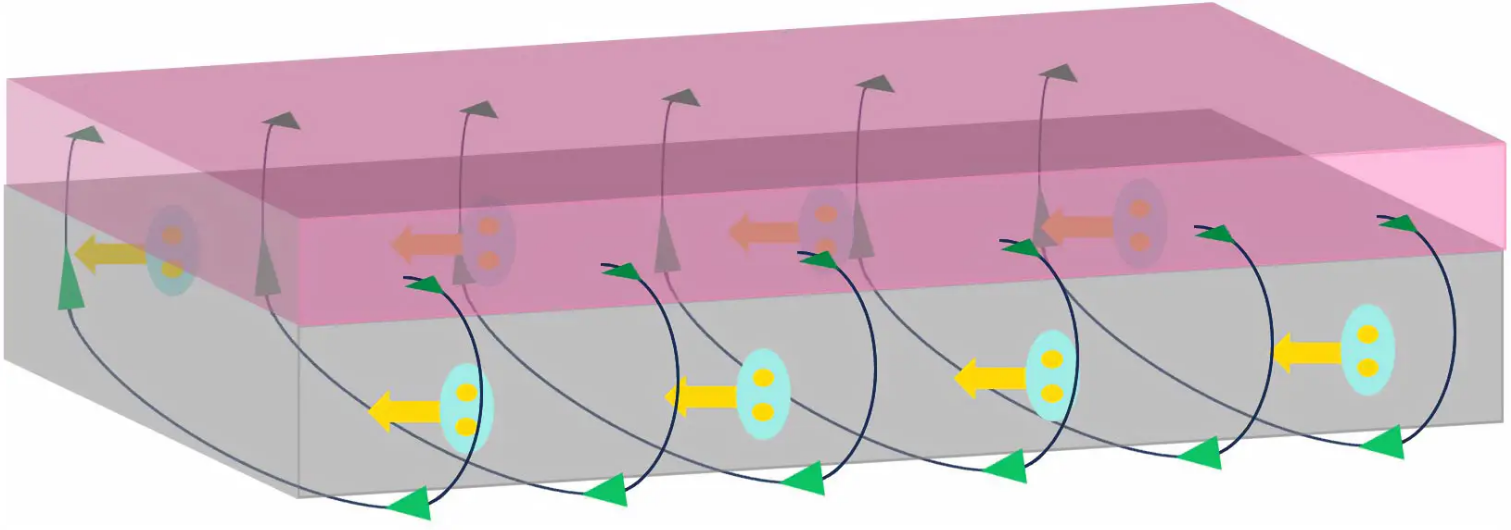High-Efficiency Superconducting Diode Could Change Chips Forever
The diode's 50% efficiency would be a boon for chip design.

With all the rage on superconductors zipping through the news (looking at you, LK-99), it's sometimes easy to let other stories fly under the radar. But science happens everywhere, all the time: now, a research team with the Massachusetts Institute of Technology (MIT) has developed a superconducting device that they say will bring improved energy and thermal efficiency to electronics. Their work was published in an online issue of Physical Review Letters.
Like LK-99 (which is still going through a messy replication and peer-review process), the MIT-designed diode (a kind of switching device) is still in its design infancy. Yet even so, Jagadeesh Moodera (lead author) et al. say this diode is already twice as efficient as previous diode architectures when it comes to carrying current (and preventing losses), with ample design room left to improve its characteristics.
It could even impact quantum computing. And in fact, this development came as a serendipitous discovery as the team looked into Majorana fermions, one of the building blocks of topological qubits, a yet-to-be-vindicated qubit design that's been pursued by none other than Microsoft. The team soon realized their Majorana-inspired work on superconducting diodes could be easily transferred into the realm of classical (i.e., non-quantum) circuits.

Diodes are a crucial part of any chip, and are an integral part of a circuit's design. While transistors are frequently used to amplify input signals from low resistance circuits to high resistance circuits within the chip, diodes can be used as either voltage stabilizers or as one-way valves (in that they only allow current to flow in one direction). It seems that either of those applications would benefit from this new superconducting design.
With chip design being forcefully constrained by the amount of heat generated by electrical losses (a bottleneck that's seen increasingly more complex transistor designs and new cooling technologies that deal with these issues in a limited manner), the benefits of lossless diodes in improving computing and thermal efficiency shouldn't be underestimated.
All the hallmarks of a superconductor were required to make the super-efficient diodes. The MIT research team showed that tiny differences between the edges of the diode devices could be optimized (by adding serrated edges, or applying other deformations). That's why the design is still open for optimization: the amount of possible design variations is enormous, and there's only so much time to find what the best asymmetrical configuration is.
The design quirk shows that even microscopic differences in materials can result in disproportionate results. These diodes also have superconducting hallmarks such as the Meissner effect and the ability to lock into pre-existing magnetic fields (known as flux pinning).
Get Tom's Hardware's best news and in-depth reviews, straight to your inbox.
Speaking with SciTechDaily, Philip Moll (Director of the Max Planck Institute for the Structure and Dynamics of Matter in Germany and not involved in the research) said that the MIT team's paper showcases how superconducting diodes are now an "entirely solved problem from an engineering perspective". He also added that the record efficiencies showcased by the design were hit "without even trying", with structures being "far from optimized yet". That sounds like perfectly smart (although still hard) science.
Crucially, the team says its superconducting diode is robust, and is able to operate over a wide temperature range while potentially opening the door to new technologies and designs. Adding relevancy to the discovery, the engineers say these diodes' design is simple and compatible enough that it's easily scalable - millions of them can be produced across a single silicon wafer.
So let's get them out here already?

Francisco Pires is a freelance news writer for Tom's Hardware with a soft side for quantum computing.
-
InvalidError Replyits superconducting diode is robust, and is able to operate over a wide temperature range
Unless that "wide temperature range" goes to at least 200K, it won't have many uses beyond applications that already use superconductors. -
SpecialSauce13 Oof. Imagine being a writer who posts an article a day after it was discovered that this super conductor was a scam.Reply -
bit_user Reply
Maybe it was a fun ride? It got us talking and I learned a couple things. It generated clicks for the website, during the summer doldrums.SpecialSauce13 said:Oof. Imagine being a writer who posts an article a day after it was discovered that this super conductor was a scam.
Maybe he'll be a bit more cautious, next time, but what's working against that is some competitive & time pressure to try and stay on top of the story before it becomes old news.
In the end, I'm left feeling that it's not too much different than covering the tech rumor mill. At least, in that case, we all hopefully know that any rumor or leak has a reasonable chance of being wrong. -
thestryker Reply
Source?SpecialSauce13 said:Oof. Imagine being a writer who posts an article a day after it was discovered that this super conductor was a scam. -
bill001g Reply
Looks like a drive by user who only reads the headlines but he might just be premature in his statement. There is a article on this site that talks about a video out a university in china that is fake. The original claims from korea are still being tested by others.thestryker said:Source?
This is just a science version of all the garbage you see on social media where some people can not resist posting false content. -
thestryker Reply
Yeah this article has literally nothing to do with the LK-99 stuff that's been everywhere.bill001g said:Looks like a drive by user who only reads the headlines but he might just be premature in his statement. There is a article on this site that talks about a video out a university in china that is fake. The original claims from korea are still being tested by others.
This is just a science version of all the garbage you see on social media where some people can not resist posting false content. -
Dikinbaus FTFA:Reply
Diodes are a crucial part of any chip, and are an integral part of a circuit's design. While transistors are used to amplify input signals from low resistance circuits to high resistance circuits within the chip, diodes are usually responsible for converting alternate current (AC) to direct current (DC).
This is gibberish. Generally, only power conversion chips are likely to incorporate diodes as part of their function. Other chips might might use them for protection of the I/O pads but that's about it. Even fewer chips will connect in any way to AC. Referring to a circuit as high or low resistance is almost never appropriate.
The article was clearly written by someone with no knowledge of chip design: perhaps ChatGPT. -
bit_user Reply
I pretty much thought so, but I had to actually look up schematics on CMOS gates, to be sure none of them included any diodes.Dikinbaus said:FTFA:
Diodes are a crucial part of any chip, and are an integral part of a circuit's design. While transistors are used to amplify input signals from low resistance circuits to high resistance circuits within the chip, diodes are usually responsible for converting alternate current (AC) to direct current (DC).
This is gibberish. Generally, only power conversion chips are likely to incorporate diodes as part of their function. Other chips might might use them for protection of the I/O pads but that's about it. Even fewer chips will connect in any way to AC. Referring to a circuit as high or low resistance is almost never appropriate.
The article was clearly written by someone with no knowledge of chip design: perhaps ChatGPT.
I would agree the author doesn't have sufficient knowledge of electronics and probably pulled the descriptions out of wikipedia or somewhere, but I'm pretty sure ChatGPT wasn't involved.
Given the relationship diodes have to transistors, is it plausible that this could be a precursor to possible improvements in transistor efficiency? -
InvalidError Reply
Every planar and finned CMOS transistor has an intrinsic body diode simply due to how the source, drain and channel lie on the silicon substrate. This parasitic diode is often use in medium-low power electronics to clamp back-EMF from the load back to the supply rail. In higher-power applications, it is usually supplemented by external diodes to reduce the amount of energy dissipated in the MOSFET.bit_user said:I pretty much thought so, but I had to actually look up schematics on CMOS gates, to be sure none of them included any diodes.
In logic, diodes don't get used much for anything besides OR-ing and even then, it is simpler to have an open-collector/drain zero a signal line being pulled high than diode OR-ing drivers into a line being pulled low. You need a driver and current source/sink to bring the line to the designated default state but open-collector/drain skips the diodes and gives you almost the entire voltage swing from GND to Vcc, no diode drops.
In (ultra-)low-power electronics like remotes, the input/output body diodes are sometimes used to power the micro-controller when buttons are pressed: the micro-controller is normally disconnected from +Vbat, buttons are pulled high to +Vbat by resistors and when a button is pressed, power back-feeds into Vcc through the buttons enough for the micro-controller to turn on the FET that connects +Vbat to Vcc, decodes the key press, blasts the IR code for the button and turns itself off again until the next key press.